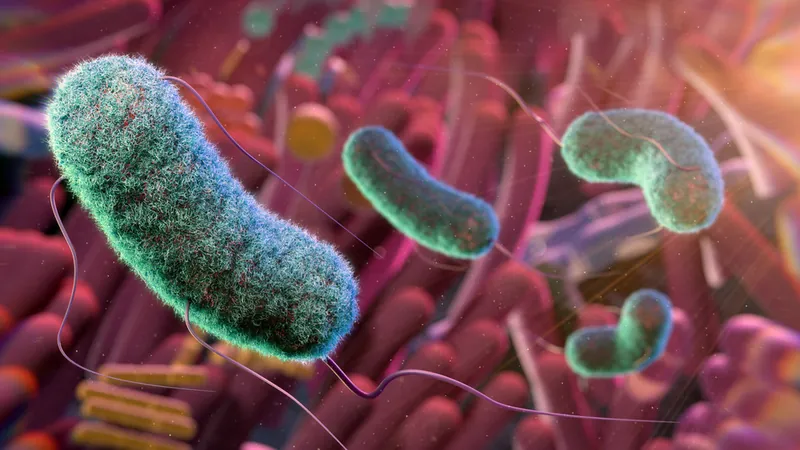
Revolutionary Discovery: Gut Microbes Could Hold the Key to Early Detection of Gestational Diabetes!
2025-07-01
Author: Li
Unlocking the Link Between Gut Health and Gestational Diabetes
A groundbreaking study has unveiled a startling connection between gut microbes and the risk of developing gestational diabetes (GDM) during pregnancy. Research published in *Microbiology Spectrum* indicates that an imbalance in gut flora early in gestation could serve as a predictor for this serious metabolic disorder, which carries significant health implications for both mothers and their babies.
A Game-Changer in Diagnosis and Management
The researchers have demonstrated that specific gut microbiota signatures linked to GDM can potentially be utilized as early diagnostic biomarkers. These findings suggest a revolutionary approach to not just detect but also manage GDM more effectively, offering exciting new avenues for prevention tailored to individual needs.
Weirong Yao, from the Second Hospital of Zhangzhou in China, emphasized, "These findings suggest that microbiota-based tools could enable early, non-invasive detection of GDM, offering new opportunities for prevention and personalized management." This could drastically change how we approach maternal and fetal health.
The Role of Gut Microbiomes in Pregnancy
Our gut microbiota consists of trillions of microorganisms that play critical roles in maintaining our health through metabolism, immune function, and intestinal integrity. During pregnancy, these microbial communities undergo significant shifts to accommodate the changing needs of the body. However, when these ecosystems fall out of balance—known as gut dysbiosis—it can be closely linked to complications such as gestational diabetes.
A Deep Dive into Fecal Microbiota
To explore this connection further, the research team analyzed the fecal samples of 61 pregnant women during their first trimester, utilizing advanced 16S rRNA sequencing techniques. They then correlated these microbial profiles with results from an oral glucose tolerance test (OGTT) later in pregnancy, revealing marked differences between women who developed GDM and those who did not.
Key Findings That Could Shape Future Research
The analysis highlighted significant variations in gut microbiota composition from the earliest stages of pregnancy. Women who would go on to develop GDM showed heightened levels of Firmicutes and Proteobacteria while exhibiting lower levels of Bacteroidota. At the genus level, increases in Escherichia-Shigella and Klebsiella were noted, contrasted by diminished levels of Bacteroides and Faecalibacterium.
Leveraging these microbial differences, Yao and her team developed a predictive model for early diagnosis that boasts impressive precision—with a remarkable area under the receiver operating curve of 98.23.
Looking Ahead: The Future of GDM Management
The research team aims to expand their studies to include a larger cohort of women and incorporate cutting-edge multi-omics techniques, such as fecal metabolomics and plasma proteomics, to enrich their analysis.
In conclusion, these pioneering results pave the way for innovative strategies in the early warning and intervention of gestational diabetes, laying the groundwork for developing diagnostic tools and therapeutic methods centered around gut microbiota.






 Brasil (PT)
Brasil (PT)
 Canada (EN)
Canada (EN)
 Chile (ES)
Chile (ES)
 Česko (CS)
Česko (CS)
 대한민국 (KO)
대한민국 (KO)
 España (ES)
España (ES)
 France (FR)
France (FR)
 Hong Kong (EN)
Hong Kong (EN)
 Italia (IT)
Italia (IT)
 日本 (JA)
日本 (JA)
 Magyarország (HU)
Magyarország (HU)
 Norge (NO)
Norge (NO)
 Polska (PL)
Polska (PL)
 Schweiz (DE)
Schweiz (DE)
 Singapore (EN)
Singapore (EN)
 Sverige (SV)
Sverige (SV)
 Suomi (FI)
Suomi (FI)
 Türkiye (TR)
Türkiye (TR)
 الإمارات العربية المتحدة (AR)
الإمارات العربية المتحدة (AR)